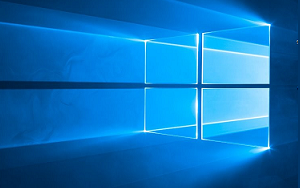Dark mode on Android devices provides a more comfortable viewing experience in low-light environments and can save battery life. This guide offers step-by-step instructions on how to enable dark mode across various Android versions and apps.
Mastering Dark Mode on Android: A Comprehensive Guide
Dark mode has become an essential feature for Android users who wish to reduce eye strain and conserve battery life while enjoying their devices. This guide will walk you through enabling dark mode on your Android device, covering different versions and popular apps. Whether you're using Android 10 or a more recent version, this guide has you covered.
Benefits of Using Dark Mode
Before diving into the steps to enable dark mode, let's explore some of the benefits:
- Reduced Eye Strain: Dark mode helps in reducing the glare from the screen, making it easier on the eyes, especially in low-light conditions.
- Battery Conservation: For OLED screens, dark mode can save battery life as pixels use less power when displaying black.
- Improved Readability: In certain environments, dark mode can enhance the readability of content.
Enabling Dark Mode on Android 10 and Above
Starting with Android 10, Google introduced a system-wide dark mode. Here's how you can enable it:
- Open Settings: Tap on the Settings icon in your app drawer or home screen.
- Navigate to Display: Scroll down and select Display.
- Select Dark Theme: Find the Dark Theme option and toggle it on. Your device will switch to dark mode immediately.
Enabling Dark Mode on Android 9 (Pie)
Android 9 offers a limited form of dark mode. Follow these steps:
- Access Settings: Open the Settings app.
- Go to Display: Tap on Display.
- Activate Dark Theme: Look for Advanced and tap on it, then switch on the Device Theme to Dark.
Dark Mode in Specific Apps
Many apps have their own dark mode settings. Here's how to enable it in some popular apps:
Dark Mode on Google Apps
Google apps like Chrome, Gmail, and YouTube support dark mode:
- Chrome: Open Chrome, tap on the three-dot menu, go to Settings, select Theme, and choose Dark.
- Gmail: Open the Gmail app, tap on the hamburger menu, go to Settings, choose General settings, tap on Theme, and select Dark.
- YouTube: Open YouTube, tap on your profile picture, go to Settings, select General, and then toggle on Dark Theme.
Dark Mode on Facebook
Facebook has a built-in dark mode feature:
- Open Facebook: Launch the Facebook app.
- Access Settings & Privacy: Tap on the three horizontal lines, scroll down, and select Settings & Privacy.
- Enable Dark Mode: Tap on Dark Mode and select On.
Dark Mode on Instagram
To enable dark mode on Instagram, follow these steps:
- Launch Instagram: Open the Instagram app.
- Go to Profile: Tap on your profile icon.
- Access Settings: Tap on the three horizontal lines, then select Settings.
- Enable Dark Mode: Tap on Theme and select Dark.
Scheduling Dark Mode
Some Android devices allow you to schedule dark mode:
- Open Settings: Navigate to Settings > Display.
- Select Dark Theme: Tap on Dark Theme.
- Set Schedule: Choose Schedule and set the start and end times.
Troubleshooting Dark Mode Issues
If you encounter issues while enabling dark mode, consider the following:
- Update Your Device: Ensure your device is running the latest software version.
- Check App Compatibility: Some apps may not support dark mode.
- Restart Your Device: Restarting your device can resolve minor glitches.
Conclusion
Enabling dark mode on your Android device can enhance your user experience by reducing eye strain and saving battery life. With this guide, you can easily switch to dark mode across various Android versions and popular apps. Stay tuned for more updates as Android continues to evolve and expand its features.







